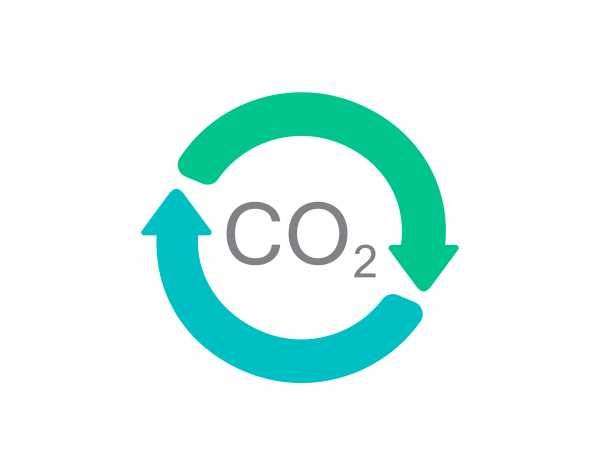
This is part one is four-part series on carbon capture and utilization (CCU), the growing industry dedicated to using carbon dioxide captured from the atmosphere to fight climate change. Part two is about enhanced oil recovery as a use of CO2, and part three is about other industrial uses of CO2. The fourth post will look at how policymakers should approach CCU technologies. This piece was originally published in September.
Scientists generally estimate that to hold the rise in global average temperature to 1.5 degrees Celsius over the preindustrial baseline — a “safe” level of warming — humanity must stabilize the atmospheric concentration of carbon dioxide at around 350 parts per million.
This year, we reached about 410 ppm. There is already too much CO2 in the atmosphere. At this point, to truly vouchsafe a secure climate for future generations, we don’t just have to reduce emissions; we have to pull some CO2 out of the atmosphere.
Given that global carbon emissions are still rising and there are hundreds of gigatons on the way from existing fossil fuel infrastructure, almost every model used by the Intergovernmental Panel on Climate Change (IPCC) that shows us reaching a safe climate involves burying gigatons of CO2, so-called “negative emissions.”
There are many forms of negative emissions, but most likely the only way to remove enough CO2 will be to pull it directly out of the air and bury it underground in saline aquifers, a process known as carbon capture and sequestration (CCS). With CCS, CO2 is treated as a waste product that has to be disposed of properly, just as we treat sewage and so many other pollution hazards.
How much CO2 will need to be buried? Obviously, it’s impossible to know in advance; IPCC models vary in how fast they show emissions falling. The faster and sooner emissions fall, the less CCS will be necessary. The slower and later they fall, the more that will be needed.
A 2017 paper in Nature Climate Change estimates the total “mitigation burden” — that is the total amount of emissions that need to be avoided between now and 2050 to stay under 2 degrees — at 800 gigatons. (Though the IPCC says 1.5 degrees is the truly safe target, many scientists believe it’s unachievable; 2 degrees remains an extremely ambitious target.) The paper estimates that even if emission reductions are successful, between 120–160 gigatons will need to be sequestered during that period.
Another way of saying that is, even given optimistic assumptions about decarbonization, we’ll probably end up emitting a lot more than our carbon budget, so we’ll need to bury between 100 and 200 gigatons of CO2 to get back within it. And, of course, we’ll have to bury hundreds of gigatons more in the years after 2050.
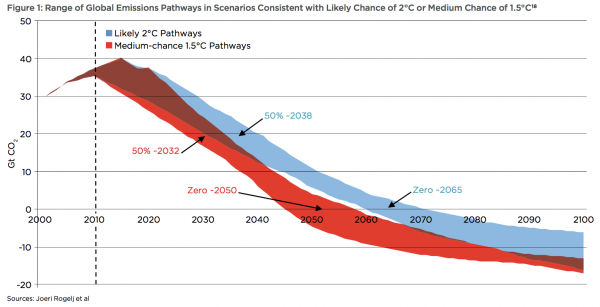
To give a sense of scale, that means by 2030 humanity needs to be compressing, transporting, and burying an amount of CO2, by volume, that is two to four times the amount of fluids that the global oil and gas industry deals with today. To build an industry of that scale, by that date, we need to begin today, with large-scale research and deployment. The price of capturing CO2 from the air needs to be driven down quickly.
But there’s a problem: Burying CO2 has no short-term economic benefits. In the absence of a fairly stiff price on carbon, meant to put a value on its long-term benefits, CCS doesn’t pencil out. There’s no incentive for companies to do it and thus no incentive to get better at carbon capture.
The easy solution to this dilemma would be a global price on carbon, but that doesn’t appear to be happening. So how, in the absence of a carbon price, can the carbon capture industry get going?
Here’s one idea: For a while at least, rather than burying the carbon, the companies capturing it could sell it.
Utilizing CO2 could provide a push for carbon capture
Carbon dioxide is a commodity with some value. It is used, both directly and as a feedstock, by a range of industries and has been for over a century.
Most CO2 used by industries today is a byproduct of fossil fuel processes, often from natural gas or coal-fueled plants making ammonia; that is it comes from below the Earth’s surface. Just like burning fossil fuels, it transfers CO2 from the geosphere to the atmosphere.
But if CO2 pulled out of the air became more plentiful and cheaper, it could begin competing with terrestrial CO2. In theory, any industry that uses carbon from under the ground — for fuel, beverages, directly in industrial processes, as a feedstock to create other products, or whatever — could switch to air-captured CO2.
Using CO2 from the air for products and services is known as carbon capture and utilization (CCU). By some estimates, it’s a potentially $1 trillion market by 2030. And it could have two broad benefits.
First, it could reduce CO2 emissions, in part by sequestering some carbon permanently in durable products and in part by substituting for carbon-intensive processes, thus avoiding emissions that would have otherwise occurred.
To be clear, CCU will never reduce enough CO2 to avoid the need for CCS (i.e., burying carbon). Not even close. The tonnage of CO2 humanity emits simply dwarfs the tonnage of carbon-based products it consumes.
But CCU could be a helpful tool in the decarbonization tool belt. As one recent paper put it, “Each atom of C we can recycle is an atom of fossil carbon left in the underground for next generations that will not reach the atmosphere today.” By one optimistic estimate, CCU could reduce up to 10 percent of total global emissions by 2030.
Second, demand for CO2 driven by CCU could provide early market pull, helping to get carbon capture technology scaled up and its costs pushed down, so that it is ready when policymakers finally get around to supporting CCS in earnest. It could serve as an “on ramp” to CCS.
A guide to the complex and confusing world of carbon utilization
This is a hot and rapidly developing area in the climate and energy world. There are all sorts of research going on into novel uses of CO2, all sorts of pilot projects underway, all sorts of startups popping up, and all sorts of confusing information and hype floating around. So let’s see if we can sort it out.
Here’s how this series of posts will go. In this post, we’ll take a brief look at the two major sources of industrial carbon capture and the basic ways CO2 is currently used by industry, just to get oriented.
In the second post, we will discuss the vexed subject of enhanced oil recovery (EOR), which is by far the largest current industrial use of CO2.
In the third post, we will take a closer look at the top non-EOR markets for CO2, like building materials and fuels, and their total potential, in both economic and carbon terms.
And in the final post, we’ll contemplate the road forward for CCU, what kinds of supportive policies it requires, and, taking a step back, the right way to see it in the overall context of the climate fight.
It’s going to be fun! You’ll never see CO2 quite the same way again.
Varieties of carbon capture
First, let’s get clear on what I mean when I talk about standing up an industrial carbon capture industry.
A wide variety of “natural” processes absorb and sequester carbon, on land (forests and soil), on the coasts (wetlands and mangroves), and in the ocean. The carbon-absorbing capacity of those processes can be enhanced with clever human management — e.g., the US Geological Service’s LandCarbon program — and they can play a large role in the climate fight.
But in these posts, we will instead be discussing industrial carbon capture, machines built to absorb CO2 from the air via chemical reactions. We won’t get into the various chemistries and technologies involved (there are many, and they are complicated), but it is worth keeping in mind one distinction.
CO2 can either be pulled out of flue gases — waste streams produced by power generation or other industrial processes — or it can be pulled out of the ambient air through a process known as direct air capture (DAC). Each has its advantages and disadvantages.
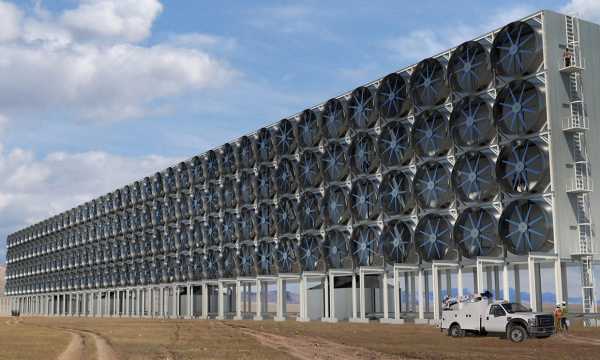
The great advantage of drawing from flue gases is that the CO2 is concentrated, roughly one molecule out of every 10, whereas in the ambient air, it is one molecule out of every 2,500. With the laws of chemistry being what they are, it’s always going to require less energy to draw a material from an already-concentrated source. On a raw commodity price basis, CO2 from flue gases will likely always be cheaper than CO2 produced by DAC.
But DAC has advantages of its own. First, it is geographically agnostic. It does not need to be attached to anything or built in any particular place. CO2 is equally concentrated in the air everywhere in the world, so DAC can be built anywhere in the world, wherever the CO2 is needed, eliminating transportation costs. It is smaller, more modular, and more adaptable.
Second, unlike every other form of carbon capture, terrestrial or industrial, DAC is limited only by costs. It can scale up to any size, depending only on our willingness to spend money on it. That’s why many in the field believe DAC to be the most promising negative-emissions technology in the long term.
(NB: there are companies like Global Thermostat with technologies they claim can capture carbon from either source.)
As we will see, various options for CCU may be better suited to one form of capture or the other.
The use of CO2 and its potential
With all that background, let’s have a look at the ways CO2 is currently used.
Here’s a graphic from the UK’s Royal Society that lays out the basic options:
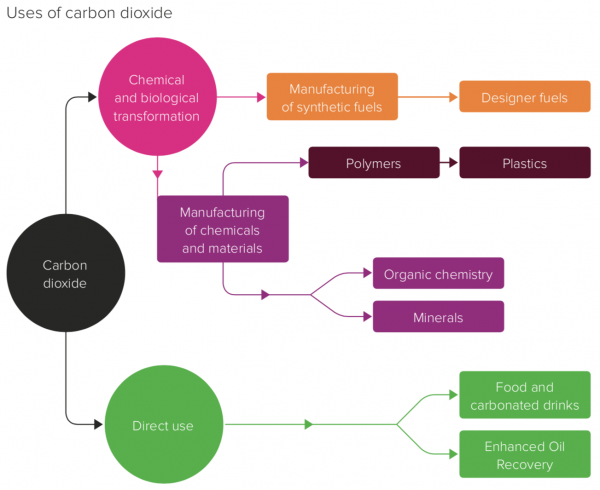
Starting at the bottom: CO2 can be used directly, in greenhouses, to carbonate beverages, or for enhanced oil recovery (the largest current use), or it can be transformed, via a wide variety of chemical processes, into materials or feedstocks. One of the chemical conversions with the biggest potential, up at the top, is combining CO2 with hydrogen to make synthetic hydrocarbon fuels.
This graphic from the University of Michigan’s Global CO2 Initiative gets a little more granular about the resulting products:

Some of these processes and products are further along in market development than others; some have larger carbon mitigation potential than others; some have larger total market potential than others. (We’ll look at all of that more closely in the third post.)
One distinction to keep in mind for now has to do with how long each of these options sequesters CO2.
For most of them, it’s a relatively short time. For instance, if captured CO2 is used to make synthetic fuels, the fuels are then burned, at which point the CO2 is released back into the atmosphere. It’s carbon recycling (or upcycling), not carbon sequestration.
Enhanced oil recovery can be done in concert with permanent geological carbon sequestration, but it rarely is today. (We’ll look at that more closely in the second post.)
Of the various other categories of CCU, only construction materials (and possibly new materials like carbon fiber) can claim to sequester CO2 semi-permanently. When you inject CO2 into concrete, the concrete is then used in a building which could last up to a century; then, if the building comes down, the concrete can be broken up and re-used. The CO2 stays put, chemically bonded.
This distinction matters in contemplating the total mitigation potential of CCU. Only a small slice of it can ever claim to be carbon-negative; its sequestration potential is limited. For the most part, its benefit will come from replacing carbon-intensive processes with carbon-neutral ones, avoiding carbon emissions. (And even that potential may be limited; more on that in the fourth post.)
All this means, again, that CCU will never substitute for CCS. At best it will help lay the foundation for CCS.
In its landmark 2016 roadmap for CCU industries, the Global CO2 Initiative was extremely bullish on CCU’s mitigation potential, arguing it could substantially assist in hitting Paris climate targets.
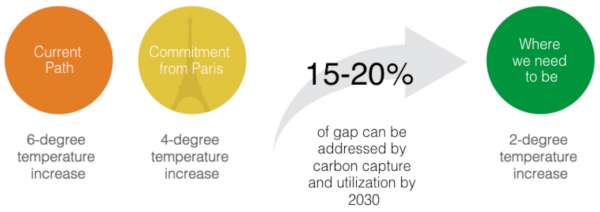
It is worth noting that these optimistic projections are not universally shared; the roadmap’s estimate of mitigation potential is at the high end of recent studies. A 2005 IPCC assessment concluded gloomily that “the scale of the use of captured CO2 in industrial processes is too small, the storage times too short, and the energy balance too unfavourable for industrial uses of CO2 to become significant as a means of mitigating climate change.”
Still, a lot has changed since 2005. Renewable energy has gotten cheaper and CO2 conversion has improved. At the very least, CCU is one of many potentially carbon abating technologies that deserves much more attention and support than it is currently getting from policymakers.
Politics do not exactly encourage long-term thinking, but 2050 isn’t that far away, and 2030 is closer still. Holding temperature “well below” 2 degrees, the UN goal, does not just mean reaching net-zero emissions by 2050, as most of the Democratic candidates for president now support. It also means building the capacity to bury hundreds of gigatons of carbon. Insofar as CCU can help get that going — an open question, for now — it is worth pursuing.
In part two, we will take a closer look at enhanced oil recovery, the dominant current use of CO2. On one hand, it uses infrastructure that could easily be repurposed for carbon sequestration in areas that tend to be suitable for carbon sequestration. On the other hand, it empowers oil companies. We shall grapple with that dilemma.
Sourse: vox.com





